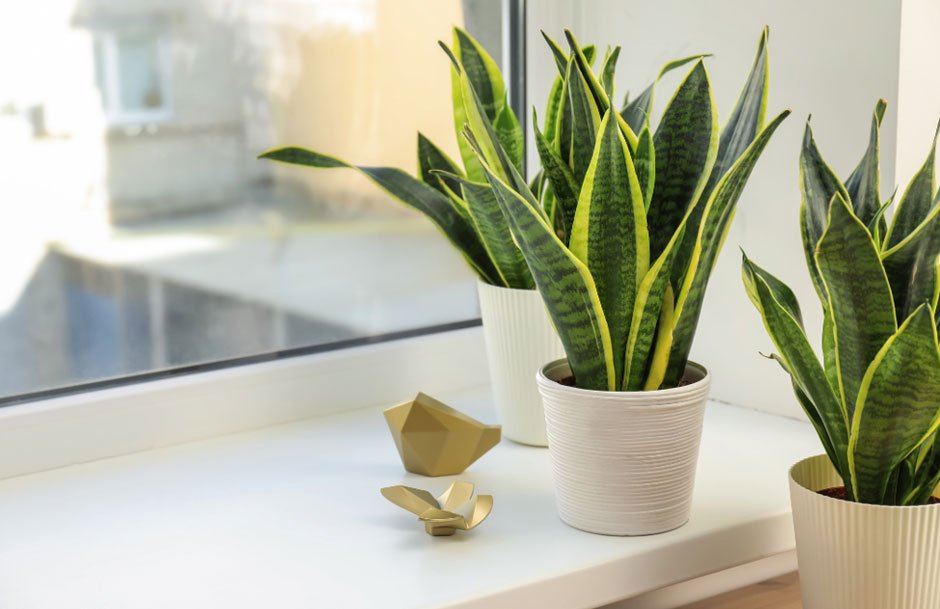Hey there, fellow plant enthusiasts! If you’ve ever taken a stroll through the enchanting world of indoor gardening, you’ve likely encountered the snake plant. These green wonders have been quietly but confidently winning hearts with their striking aesthetics, air-purifying superpowers, and their overall low-maintenance charm. But, like every star, even the beloved snake plant has its quirks and peculiarities. So, let’s dive into the intricacies and unmask the less-than-perfect side of these fascinating green companions.
While snake plants have undoubtedly become the poster children of indoor gardening, it’s essential to recognize that they are not without their imperfections. These quirks add a touch of realism to the story of these plants and can impact the decision to introduce them into your living spaces.
I’ve gathered insights from two reputable gardening platforms, The Plant Bible and Nature of Home, to provide you with a well-rounded view of snake plant disadvantages. Their experts explain what the disadvantages of snake plant are. Now, let’s uncover the unique challenges that come with the charm of snake plants.
Toxicity Concerns:
Snake plants, for all their beauty, come with a significant drawback – their toxicity. These elegant houseplants can be harmful when ingested, not only for pets but for humans too. Although the toxicity level is relatively low, it can lead to unpleasant symptoms like nausea, vomiting, and diarrhea. To keep everyone safe, it’s essential to place your snake plants out of reach of children and pets. If you share your home with furry companions, you might want to explore pet-friendly alternatives instead.
Overwatering Sensitivity:

Overwatering Sensitivity: While snake plants are generally low-maintenance, they have a sensitive side – they detest overwatering. Drowning their roots in too much moisture can lead to that dreaded horticultural nightmare, root rot. And the sneaky thing about root rot is that you often only discover it when it’s too late. To keep your snake plant healthy and happy, opt for well-draining soil and water sparingly. And, if you find your snake plant swimming in excess water, fret not! The Indoor Nursery suggests that you can rescue it by removing it from its soggy environment, trimming any rotting roots, and allowing it to dry before replanting in well-draining soil.
Growth at a Snail’s Pace
If you’re the impatient type looking for a plant to quickly transform your living space, the snake plant might not be your ideal choice. These plants are notorious for their leisurely growth, making them the tortoises of the plant kingdom. So, if you’re all about that instant gardening gratification, the slow pace of snake plants might leave you tapping your foot in anticipation.
Aesthetic Monotony:
Snake plants, while undeniably charming, do have a bit of a “one-trick-pony” thing going on in the aesthetics department. Unlike some other houseplants that offer a rich tapestry of leaf shapes, colors, and patterns, snake plants mostly come in various shades of green with subtle variations. So, if you’re on the hunt for a plant that brings more visual diversity to your indoor garden, you might want to look beyond the snake plant.
Vertical Limitations:

The height constraints of snake plants can be a tad limiting, especially if you’re after a dramatic, towering presence in your room. They typically top out at 2-4 feet, which might not quite cut it when it comes to filling vertical spaces in larger rooms. If you’re all about making a grand green statement, you might need to seek out taller green companions.
Seasonal Dormancy:
Another thing to consider is that snake plants have their “winter blues.” They go through a dormant phase during the colder months. While this is a natural part of their growth cycle, it can be a downside for those seeking year-round lushness. During dormancy, the leaves might lose some of their vibrancy, which could be a little disappointing if you’re all about that evergreen aesthetic.
Fragrance-Free Zone:
Many plant enthusiasts revel in the delightful fragrances that indoor plants bring into their homes. Snake plants, however, are notorious for their lack of scent. So, if you’re aiming to infuse your living space with a soothing aroma, you’ll need to turn to other plant options that can deliver on the fragrance front.
Conclusion
While snake plants undoubtedly have numerous advantages, it’s essential to consider their disadvantages to make an informed decision when adding them to your indoor plant collection. From their toxicity to slow growth, sensitivity to overwatering, limited aesthetic variety, height constraints, dormancy period, and lack of fragrance, these drawbacks should not be overlooked. By understanding both the pros and cons, you can ensure that snake plants are the right fit for your home and lifestyle.

